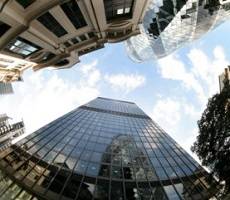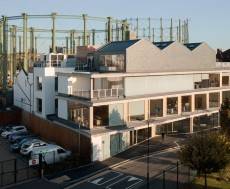October 18, 2016
The global uberification of commercial property and the workplace 0
 Technology doesn’t just transform the world, it reshapes our language. So, we all need to get used to the word uberification as well as the idea of it. Based on the success of the on demand taxi service Uber, the word refers to the way a product or service becomes available to customers on demand via the Internet. Customers book a service only at the point of consumption. This represents an entirely new commercial model and is the defining characteristic of the new 21st Century economy. Uber may have provided the tipping point, going from start up to market valuation of $66 billion in just 7 years, but its success has given us a name for a process that is reshaping businesses and customer experiences across the entire economy, including in the commercial property sector.
Technology doesn’t just transform the world, it reshapes our language. So, we all need to get used to the word uberification as well as the idea of it. Based on the success of the on demand taxi service Uber, the word refers to the way a product or service becomes available to customers on demand via the Internet. Customers book a service only at the point of consumption. This represents an entirely new commercial model and is the defining characteristic of the new 21st Century economy. Uber may have provided the tipping point, going from start up to market valuation of $66 billion in just 7 years, but its success has given us a name for a process that is reshaping businesses and customer experiences across the entire economy, including in the commercial property sector.










 The first full month of market activity in the UK’s commercial property sector since the Brexit vote, saw its value fall by just under three percent, according to
The first full month of market activity in the UK’s commercial property sector since the Brexit vote, saw its value fall by just under three percent, according to 
 The UK commercial property sector is now larger than at any time since before the last recession, claims a new analysis from the Investment Property Forum. It has risen nearly 50 percent since its lowest point in 2009 and is now valued at £871 billion, an increase of around 11 percent. The amount of stock actually shrank last year, according to the study, with the increase in overall value arising from price rises. The previous highest valuation the IPF puts on the market was £865 billion in 2006. All is not good news however as a second report from the same organisation which explores sentiment in the market following the Brexit vote confirms there is a great deal of uncertainty in the market. This is particularly acute in the London market which makes up over a third of the nation’s total and is increasingly dominated by foreign owners who may have a negative response to the UK’s vote to leave the EU. Intriguingly, the report found that total floorspace marginally declined over 2015 and has only increased by 0.9 percent since the market high of 2006.
The UK commercial property sector is now larger than at any time since before the last recession, claims a new analysis from the Investment Property Forum. It has risen nearly 50 percent since its lowest point in 2009 and is now valued at £871 billion, an increase of around 11 percent. The amount of stock actually shrank last year, according to the study, with the increase in overall value arising from price rises. The previous highest valuation the IPF puts on the market was £865 billion in 2006. All is not good news however as a second report from the same organisation which explores sentiment in the market following the Brexit vote confirms there is a great deal of uncertainty in the market. This is particularly acute in the London market which makes up over a third of the nation’s total and is increasingly dominated by foreign owners who may have a negative response to the UK’s vote to leave the EU. Intriguingly, the report found that total floorspace marginally declined over 2015 and has only increased by 0.9 percent since the market high of 2006.


















